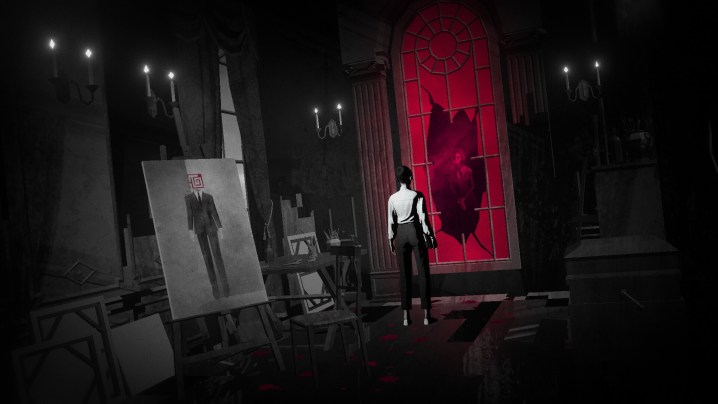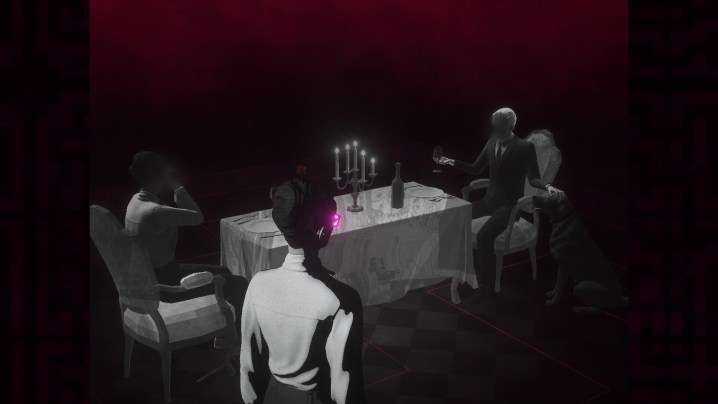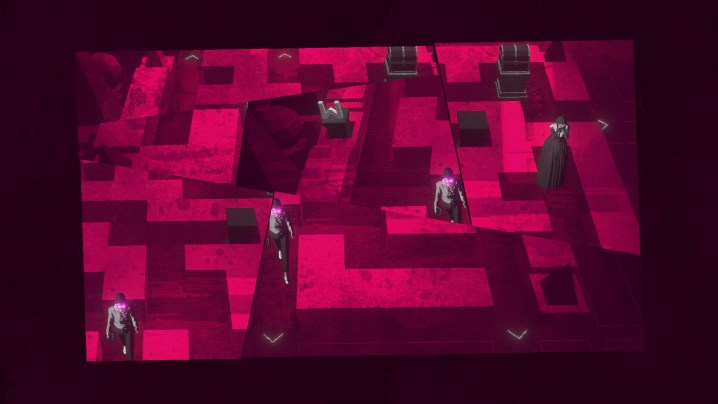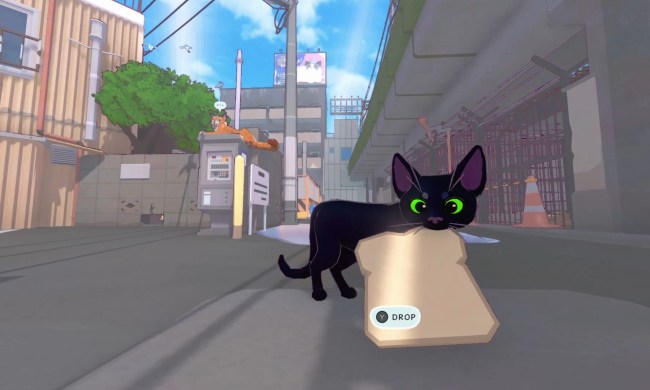
If you’ve been following indie publisher Annapurna Interactive over the last two years, you might be familiar with Lorelei and the Laser Eyes. The new project from Sayonara Wild Hearts developer Simogo has gotten a spotlight at a handful of live-stream showcases since 2022, with trailers teasing its eerie tone and puzzling world. While we’ve known those details for a while, there’s still one burning question that remains: What the hell is it?
After a long wait, I finally have the answer to that question. Annapurna Interactive lifted the lid on the mysterious game, giving me unrestricted access to a full PC build of it. Though I’m still making my way through its puzzle-filled haunted hotel, I’ve played enough to get a good sense of what Simogo is delivering. I’ve also played enough to say, with confidence, that Lorelei and the Laser Eyes might just be one of 2024’s boldest and best games.
Puzzle-box horror
Though Lorelei and the Laser Eyes seems totally foreign when first glancing at its striking black-and-white art style, it’s actually fairly easy to explain. It’s essentially a 1990s horror game with all the combat removed. My journey begins when I arrive at a creepy hotel where I’ll be helping an eccentric Italian auteur film his latest avant-garde masterpiece. There’s a lot of story there, doled out through scattered writing and occasional cutscene breaks, but the bulk of my time is spent solving the hotel.
It works a lot like the original Resident Evil or Alone in the Dark. When I start, I’m in a hotel full of locked doors. Some have padlocks requiring number codes. Others need keys. I start with nothing except a letter that gives me a sense of what year I’m in and some tampons. I’m given free reign to explore the open parts of the hotel in any way I’d like, taking mental note of locked doors and picking up objects along the way. Fixed camera angles track my movement from room to room, just like in Resident Evil.

At first, the puzzles I encounter seem simple enough. To unlock shortcut doors, for instance, I get a puzzle book filled with 20 number riddles. Each one has a two-digit answer that I can dial into a lock on a door matching the puzzle’s number. Some of those require me to solve math or word problems, while some more antagonistic ones hide deceptively simple solutions behind basic reading comprehension. Some puzzles will make you feel like a genius when you solve them; others will make you feel like a moron for taking so long to figure them out.
The hotel is loaded with tactile puzzles that have me entering numbers or a passcode of some sort onto an object. Usually, those answers are found on some sort of document I need to find that’s either hinted at in the environment or locked behind some sort of cypher I need to crack. Early on, I notice one type of locked door that appears near movie posters for the director’s films. I have no idea what the solution could possibly be until I find some video cassette boxes for those films, each one including a synopsis, the year it was released, its runtime, and more. I solve one straightforward puzzle using that information, but that’s only half the battle. Other doors have more complex clues, as movie posters appear chopped up or upside down. It’s up to me to figure out the ultimate logic of each puzzle and crack the codes accordingly.
What’s harder to express is just how astonishingly complex those mounting challenges become. The more I learn about the world’s puzzle language, the more I’m able to solve things that seemed entirely impossible initially. Early on, I find a room full of wooden puzzle boxes that seemingly can’t be opened unless I press four buttons in the right order. I have no clue what that means at first. I crack it hours later in a moment of pure galaxy brain where I naturally piece together the most obtuse logic possible without any hints.

Not for the casual puzzle fan
Let me be clear: This isn’t a game for casual puzzle players. Simogo fully admits that it doesn’t expect a lot of players to finish it. It’s a high-level challenge that requires patience, intense critical thinking, and some serious note-taking (all documents are stored in a menu, but a notebook is truly required). It’s cut from the same cloth as genre greats like The Witness or Return of the Obra Dinn. Solutions that seem impossible will make sense eventually so long as you trust Simogo’s sharp design and your own ability to obsessively track patterns like Jim Carrey’s character in The Number 23.
If the puzzles don’t hook you, the art direction will. Every second of Lorelei and the Laser Eyes is visually arresting so far. Occasional splashes of red occasionally cut through the high-contrast world. Ominous imagery lurks in every room, from shattered mirrors to repeated maze motifs. An atmospheric soundtrack hangs over it all, occasionally giving way to a rare jump scare. It’s as mesmerizing as it is unsettling — and there are so many visual surprises that I dare not spoil.
Even trying to keep my descriptions as general as possible, it already feels like I’ve said too much. The best way to play Lorelei and the Laser Eyes is to go in with almost no prior knowledge. Don’t watch a streamer play it, look up lore explainers, or rely on a guide to get through it. The at times antagonistic mystery is the point here, just like punishing combat is for Dark Souls. I still have a lot more to see judging by the game’s completion rate. I may never solve it all, but I can’t remember the last time I was this totally engrossed in a game. I count down the hours to the end of every workday so I can get back to it. I have a notebook full of scribbles that I study when I’m not playing. I fall asleep every night thinking about it.
This is the kind of game that will take over your life. Don’t start it until you’re ready to fall down the rabbit hole.
Lorelei and the Laser Eyes launches on May 16 for Nintendo Switch and PC.



